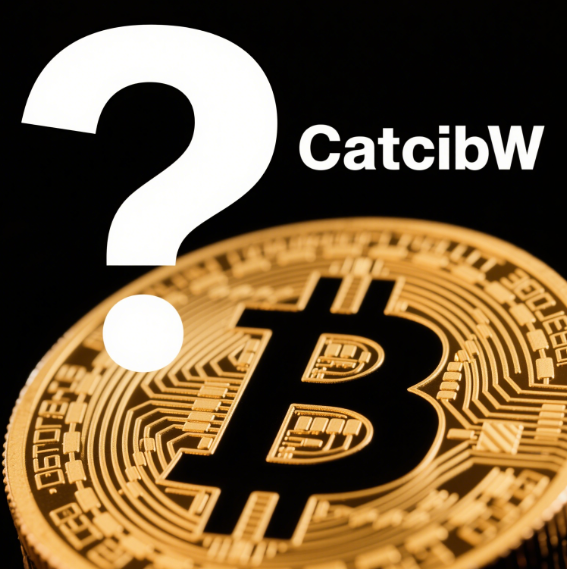In the world of Bitcoin, investors often hear the term "pullback," but for many newcomers, this term may not be very clear. So what exactly does a Bitcoin pullback mean? After a period of rise, a temporary drop in Bitcoin’s price is a normal phenomenon. How should investors interpret this situation, and how can they judge the duration of such pullbacks? Today, we will delve into these questions and provide some practical advice on how to respond to pullbacks.
What is a Bitcoin Pullback?
A pullback typically refers to a temporary drop in price during an upward trend. Specifically, after Bitcoin has experienced a period of rising prices, if the price drops but this decline does not signify the end of the trend and is merely an adjustment, it is considered a pullback.

Nature of Pullbacks
Temporary: Pullbacks are usually short-term phenomena and are part of normal market fluctuations. Many technical analysts note that pullbacks after new market highs serve the purpose of confirming support and resistance levels.
Varied Depth: Pullbacks can vary in magnitude and depth. In the Bitcoin market, pullbacks typically range from 5% to 20%, and in some cases even higher. Understanding this is crucial for investors, as it can help them determine whether it is worth entering during a pullback.
Emotion-Driven: Pullbacks are often influenced by market sentiment. When the market is bullish, investors usually expect prices to keep rising; conversely, when concerns arise, the price may temporarily drop, resulting in a pullback.
Why Does Bitcoin Pullback?
There are many reasons for Bitcoin pullbacks; here are some major factors:
Market Supply and Demand: Bitcoin's price is determined by the relationship between supply and demand. After a period of rising prices, some investors may choose to sell to take profits, resulting in increased supply and a subsequent price drop.

Market Sentiment Fluctuations: Changes in market sentiment are significant factors that lead to pullbacks. In a bull market, investor optimism drives prices up; however, any negative news or shift in market trends can quickly lead to pessimism, causing a price pullback.
Technical Factors: Technical analysis also contributes to price pullbacks. Many traders rely on technical charts and indicators to guide their trading decisions, and price movements at key support and resistance levels can trigger technical trading signals that lead to pullbacks.
Macroeconomic Factors: Bitcoin does not exist in isolation; macroeconomic factors such as interest rate changes and policy adjustments can directly or indirectly influence Bitcoin's price. If overall market conditions deteriorate, investors may sell Bitcoin as a risk-averse measure, triggering a price pullback.
How Long Does a Bitcoin Pullback Usually Last?
So, how long does a Bitcoin pullback typically last? There is no fixed answer to this question, as the duration of a pullback depends on various factors, including market sentiment, relevant news, technical patterns, and other external economic factors.
Duration of Pullbacks
Short-Term Pullbacks: Generally, pullbacks of 5%-10% can last a few days to a couple of weeks. For example, when Bitcoin experiences a sharp decline during a bull market, it may rebound quickly within one to two weeks.

Medium-Term Pullbacks: Larger pullbacks (15%-25%) can last from several weeks to a few months. During this period, the market reevaluates Bitcoin's value, and investor sentiment will influence how long the pullback lasts.
Long-Term Pullbacks: In extreme cases, Bitcoin may undergo long-term pullbacks lasting several months or even longer. For example, during the bear market of 2018, Bitcoin experienced a downward trend for over a year, with significant adjustments during this time.
How to Respond to Bitcoin Pullbacks?
For investors, while pullbacks are inevitable, there are strategies to cope with them:
Stay Calm: Pullbacks are part of the market, and as investors, it is crucial to remain calm and avoid making emotional decisions. History has shown that patience and a long-term perspective often yield better returns.
Study Technical Analysis: Gaining a basic understanding of technical analysis can help you better understand market trends. Identifying support and resistance levels can aid in assessing the depth of pullbacks and whether it’s worth entering the market.
Set Reasonable Stop-Loss and Take-Profit Levels: Setting reasonable stop-loss and take-profit levels during both upward and downward trends helps manage risks and prevents significant losses.
DCA (Dollar-Cost Averaging): If you think a pullback offers a good buying opportunity, consider a dollar-cost-averaging approach to reduce investment risks. This way, if prices continue to decline, you won't sustain severe losses.
Stay Informed: Keep an eye on market dynamics, especially important news and events impacting the Bitcoin market, so you can better assess changes in market sentiment.
Conclusion
Understanding the meaning and reasons behind Bitcoin pullbacks is vital for all Bitcoin investors. Pullbacks are a natural part of market dynamics, providing investors not only with buying opportunities but also with occasions to reflect on market trends. Staying calm and rational amid price fluctuations is key to successful investing. I hope this article has been helpful for those exploring Bitcoin investments, offering practical perspectives and strategies for dealing with pullbacks.
No matter how the market changes, remember to always maintain a learning attitude and continuously improve your investment skills! If you have any questions about Bitcoin pullbacks, feel free to engage in discussion!
















No comments yet